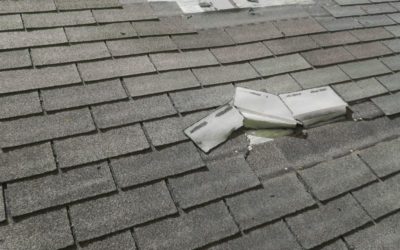Install shingles on a hip roof step by step might seem like a job best left to the pros, but with the right prep and approach, you can tackle it yourself. Hip roofs, with their sloping sides meeting at a ridge, demand careful shingle installation to ensure a weathertight seal.
This guide will equip you with the knowledge to handle the task effectively. From prepping the roof and laying underlayment to cutting shingles for those tricky angles and finishing with ridge caps, each step is crucial. With attention to detail and safety, you can achieve a durable and attractive roof.
Preparation and Safety for Installing Shingles on a Hip Roof
Installing shingles on a hip roof requires careful preparation and strict adherence to safety measures. Proper planning ensures a smoother installation process and helps prevent accidents. Before you start, it’s essential to gather the right materials, inspect the roof, and take necessary precautions.
Gather the Right Tools and Materials
Before beginning, make sure you have all the necessary tools and materials on hand.
Having the right equipment will save you time and prevent unnecessary delays. You’ll need roofing shingles, underlayment, roofing nails, a roofing hammer or nail gun, a chalk line, a utility knife, a tape measure, a pry bar, and a ladder. Additionally, ensure you have protective gear, including gloves, safety glasses, and a harness.
Inspect the Roof Structure
A thorough roof inspection is crucial before installing shingles. Look for signs of damage, such as rotting wood, water leaks, or structural weaknesses. If any issues are present, they must be repaired before shingling.
Installing shingles over a damaged roof can lead to costly repairs down the line. Replace any compromised plywood sheathing, reinforce weak areas, and ensure proper ventilation to prevent future issues.
Ensure Proper Weather Conditions
The weather plays a significant role in the success of your roofing project. Ideal conditions for shingle installation include mild temperatures and dry weather.
Avoid installing shingles on rainy, windy, or excessively hot days, as these conditions can make the process dangerous and reduce the lifespan of your roof. Wet surfaces increase the risk of slipping, while extreme heat can soften the shingles, making them more prone to damage.
Prioritize Safety Measures
Roofing work comes with inherent risks, so safety should always be a top priority. Before climbing onto the roof, secure a sturdy ladder on a flat surface and wear a safety harness attached to an anchor point.
Never work on a roof alone—having a partner can help in case of an emergency. Additionally, wear non-slip shoes to improve stability, and always be mindful of your footing, especially on steep slopes.
Set Up a Safe Work Area
Clear the work area of any debris, loose tools, or unnecessary materials that could create tripping hazards. If working on a residential property, inform those inside about the project to prevent accidental disturbances.
Keeping a clean and organized workspace reduces the risk of accidents and increases efficiency. Use caution tape or safety barriers to prevent unauthorized access to the area, especially if children or pets are nearby.
Installing the Underlayment
Once the roof deck is prepared, the next step is installing the underlayment. The underlayment acts as a moisture barrier, protecting the roof deck from water damage and leaks. Proper installation is key to ensuring long-term durability.
Choose the Right Underlayment
There are different types of roofing underlayment, and selecting the right one is essential for optimal performance. Asphalt-saturated felt is a traditional and affordable option that provides basic protection.
Synthetic underlayment is lightweight, durable, and resistant to tearing, making it a preferred choice for many professionals. Peel-and-stick underlayment is self-adhering and waterproof, ideal for areas prone to heavy rain and ice. Choosing the right underlayment depends on your climate, budget, and roofing needs. High-quality materials will provide better protection and longevity.
Proper Installation Techniques
Correct installation of the underlayment ensures maximum effectiveness.
- Start at the bottom of the roof and work your way up. This method ensures proper overlapping and prevents water infiltration.
- Overlap each row by at least 4 to 6 inches. This creates a continuous protective layer that helps keep moisture out.
- Secure the underlayment with roofing nails or staples. Be careful not to use excessive force, as it may tear the material.
- Seal around vents, chimneys, and valleys properly. These areas are prone to leaks and require extra attention.
A properly installed underlayment enhances the overall strength of your roof and prevents water-related issues. Taking the time to do it right will save you from costly repairs in the future.
Setting Up the Drip Edge and Starter Shingles
The drip edge and starter shingles are essential for protecting your roof from water damage and ensuring a strong foundation for the shingles. Skipping these steps can result in leaks, wind damage, and premature roof failure.
Installing the Drip Edge
The drip edge is a metal flashing that prevents water from seeping into the fascia and roof deck. To install it correctly, start at the eaves and position the drip edge so it extends slightly beyond the roofline to direct water away from the structure.
Secure it with nails every 12 to 16 inches to prevent movement in high winds. Overlap sections by at least 2 inches to create a continuous barrier against water infiltration. Install the drip edge on the rakes after the underlayment for added protection against wind-driven rain.
Laying the Starter Shingles
Starter shingles provide the first layer of defense against wind uplift and water infiltration. Cut off the tabs of standard shingles or use pre-cut starter strips to create a flat surface for the first row.
Align the starter shingles along the roof’s edge with a slight overhang to direct water into the gutters. Secure them with nails near the adhesive strip, following the manufacturer’s guidelines for a firm hold. Ensure precise alignment, as any mistakes at this stage can impact the appearance and durability of the entire roof.
A well-installed drip edge and starter shingle layer reinforce your roof’s resistance to water damage and wind uplift. Taking the time to do it right ensures long-term durability and performance.
Laying Asphalt Shingles
Once the starter shingles are in place, it’s time to lay the asphalt shingles. Proper installation ensures durability, weather resistance, and a professional finish.
Aligning the First Row: Start by placing the first row of shingles directly on top of the starter shingles. Ensure they are properly aligned along the eaves and leave a small overhang. Secure each shingle with roofing nails, following the manufacturer’s guidelines for placement and spacing. Proper alignment of the first row is crucial, as it sets the foundation for the entire roof.
Staggering the Shingles: For a strong and visually appealing roof, stagger each row so that seams do not align. Cut shingles as needed to create an offset pattern, preventing water from seeping between seams. A staggered pattern improves water resistance and overall structural integrity.
Securing the Shingles: Nail each shingle securely, placing nails below the adhesive strip. Use enough nails to keep them firmly in place, especially in high-wind areas. Press down on each shingle to ensure it adheres properly. Properly secured shingles prevent wind uplift and leaks.
Working Around Roof Features: As you install shingles, carefully cut and fit them around vents, chimneys, and valleys. Use flashing and roofing cement to seal these areas and prevent leaks. Attention to detail in these areas is essential for long-term durability.
Cutting and Fitting Shingles for Hips and Ridges
Hips and ridges are critical areas of a hip roof that require special attention. Properly cutting and fitting shingles in these areas will enhance your roof’s durability and weather resistance.
Measuring and Cutting Shingles for Hips
Start by measuring the length of the hip to determine how many shingles you’ll need. Cut each shingle to fit along the hip line, ensuring a slight overhang for proper water runoff. Use a chalk line to maintain a straight and consistent alignment. This helps prevent uneven spacing and gaps that could lead to leaks.
Installing Shingles Along the Hip
Lay the shingles from the bottom of the hip, overlapping each piece as you go up. Secure each shingle with nails on both sides to keep them in place. Overlapping properly prevents water infiltration and strengthens the roof’s structure. Trim excess material to ensure a neat finish.
Fitting Shingles on the Ridge
For the ridge, use specially designed ridge cap shingles or cut standard shingles into ridge caps. Position each piece evenly along the ridge and nail them in place, following the wind direction for extra security. Proper ridge installation helps with ventilation and extends the roof’s lifespan. Apply roofing adhesive for added hold in high-wind areas.
Taking the time to cut and fit shingles correctly on hips and ridges will improve your roof’s overall strength and appearance. A well-finished hip and ridge system ensures long-term protection against the elements.
Installing Ridge Cap Shingles
Ridge cap shingles provide the final layer of protection for your roof’s ridges, preventing water infiltration and enhancing the roof’s appearance. Proper installation ensures durability and a clean, finished look.
Choosing the Right Ridge Cap Shingles
Ridge cap shingles are specially designed to cover the peaks of your roof. You can use pre-cut ridge cap shingles or cut three-tab shingles into smaller sections. Using manufacturer-recommended ridge cap shingles offers better durability and a polished finish.
Installing Ridge Cap Shingles Correctly
To install ridge cap shingles, start at the end of the ridge opposite the prevailing wind direction. Align the first ridge cap shingle and secure it with nails on both sides, placing them about an inch above the overlap area. Continue overlapping each shingle as you move along the ridge, ensuring a consistent and uniform look. Properly overlapping shingles prevent wind uplift and water penetration.
Securing and Sealing the Ridge Caps
After nailing all the ridge cap shingles in place, apply roofing adhesive to the final shingle to ensure a firm hold. In high-wind areas, additional adhesive or nails may be required for extra security. A well-installed ridge cap protects your roof’s most vulnerable points and enhances its overall lifespan. Taking the time to do it correctly will keep your roof in top shape for years to come.
Final Touches and Inspection
After installing the shingles and ridge caps, the last step is performing a thorough inspection and making any necessary final adjustments. Taking the time for a final check ensures a long-lasting and well-protected roof.
Checking for Proper Installation
Go over the entire roof and inspect the shingles for proper alignment, ensuring they are evenly spaced and securely fastened. Look for any lifted or loose shingles that could lead to leaks or wind damage. A properly installed roof should have a clean, uniform appearance without visible gaps or misaligned shingles.
Sealing and Securing Vulnerable Areas
Check around vents, chimneys, and valleys to confirm that flashing is properly installed and sealed. Apply roofing sealant where necessary to reinforce areas prone to water infiltration. Proper sealing prevents leaks and extends the lifespan of your roof.
Cleaning Up and Final Walkthrough
Remove any debris, stray nails, or leftover materials from the roof and surrounding area. Clear gutters of any shingle granules or obstructions to ensure proper drainage. Finally, conduct a final walkthrough to double-check that every component is correctly installed and secured. A thorough cleanup and inspection complete the roofing process, leaving you with a durable and reliable roof.
Can You Shingle Over Existing Shingles?
To install shingles on a hip roof, begin by securing flashing around ridges and edges. Then, start shingling from the bottom, overlapping each row by two-thirds of the shingle length. Ensure a staggered pattern and secure with nails.
Finish with ridge cap shingles for added protection. For more roofing insights, consider whether you can shingle over existing shingles, a topic explored in our previous blog post, which delves into the pros and cons of this approach.


